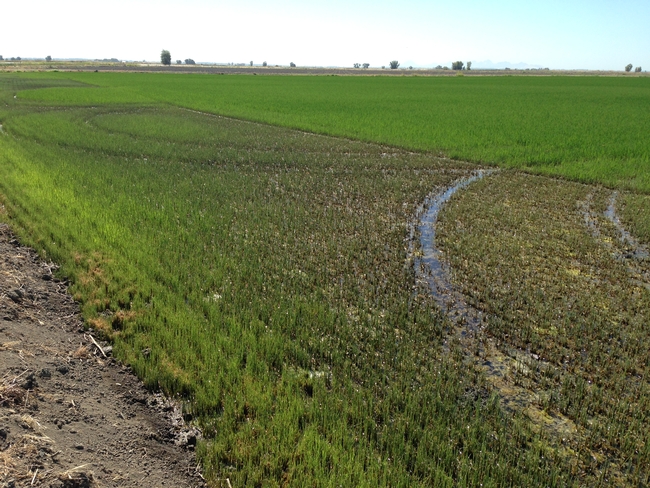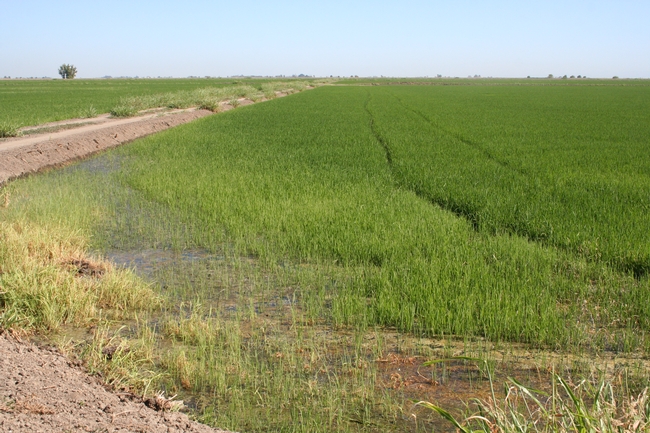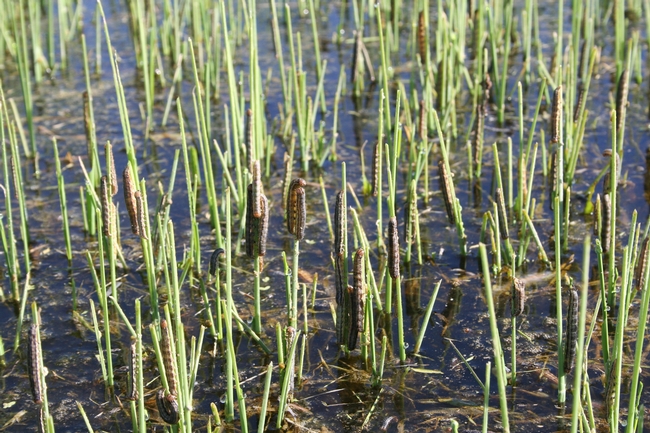I recently visited a couple of fields in Glenn County with severe armyworm injury. It seems somewhat early to be seeing this type of injury. Application of pyrethroids are not controlling these really high infestations. Fortunately, the really heavy injury is confined to corners and borders of fields.
The challenge with armyworms is to detect them early. Usually, the presence of worms is not noted until severe defoliation is observed. By this time, the worms are large and hard to kill with any insecticide. The fields I visited were about 45 days, and had large worms in them, which means that the infestation probably started at least 2 or 3 weeks ago.
Keep in mind that at this stage, rice can take quite a bit of defoliation before a yield reduction or delay in maturity is observed. If defoliation is higher than 25%, a treatment is warranted. Also, most of the armyworms you observe in the field now will drop off the plants to try to pupate in the soil, but will drown. So they won't be a source of moths for the infestation we see around heading. But the earliness and high pressure of armyworms now is an indication that growers need to be on the alert near the boot and heading stages to try to detect early armyworm infestations at that point. During booting and heading, armyworm injury can cause more damage because they can feed on the flag leaf or directly on the developing panicle.
For more information, visit the Rice IPM Guidelines here.


